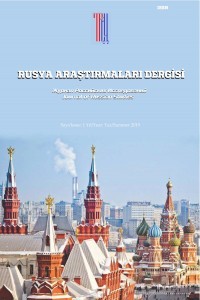
Rusya Araştırmaları Dergisi
Yazarlar: Yılmaz AYDIN
Konular:İktisat
DOI:10.48068/trad.837303
Anahtar Kelimeler:Russian economy,Labor market,Wage flexibility,Employment,Income distribution
Özet: While Keynesian models suggest that macroeconomic shocks will be regulated by quantity adaptation, in classical-neoclassical models, it is argued that adjustment will occur over price. According to classical-neoclassical economists, flexibility of prices in competitive markets provides the necessary and sufficient condition for maintaining the balance. In this sense, realizing institutional arrangements for the flexibility are the main policy suggestions for stability in the labour market. Since the early 1980s when the Keynesian approach was discredited, wage flexibility has been discussed extensively and has been widely accepted. Wage flexibility, which has become an important element of structural adjustment programs supported by the IMF and the World Bank, has been put into practice in Russia since the first years of the transition from planned economy to market economy. In the first phase of the transition, the economy in Russia experienced long and severe depressions like all Central and Eastern European Countries. While the macroeconomic shocks experienced in these countries caused a decrease in employment and a significant increase in unemployment, such a situation was not observed in the labor market in Russia. In other words, adjustment in the labor market in Russia was based on real wages, not on employment and unemployment, as in these countries. During this period, relatively stable employment and low real wages are the main features of the Russian labor market. It is seen that the Russian labor market model characterized here was applied in the same way after 2000 as well. Employment, working hours or unemployment did not react significantly to macroeconomic shocks between 2000 and 2019, while real wages quickly adjusted. Thanks to the flexibility of real wages, there was no need for layoffs in because of demand shocks, and stability was achieved at the employment level. In the same period, the unemployment rate decreased steadily and reached almost its natural rate. However, wage flexibility, which provides stability in the labor market, has led to the increase of low-wage jobs and thus has become one of the most important factors leading to an increase in income inequality. Russia has relatively high employment and low unemployment rates compared to the OECD countries. However, both the absolute value of minimum wages and the ratio of minimum wages to average wages are far below the OECD average.
Dergi editörleri editör girişini kullanarak sisteme giriş yapabilirler. Editör girişi için tıklayınız.